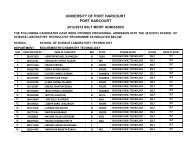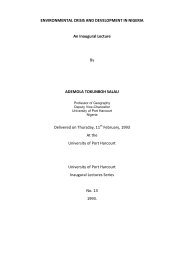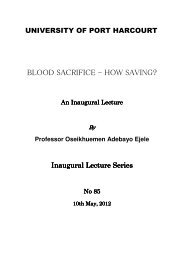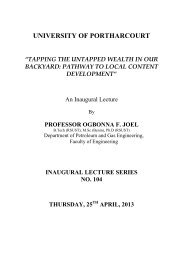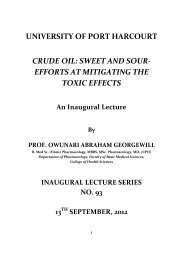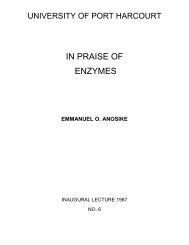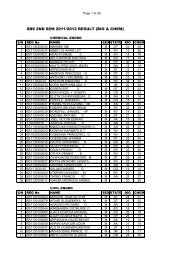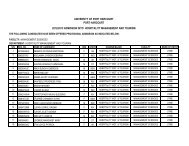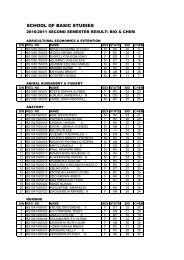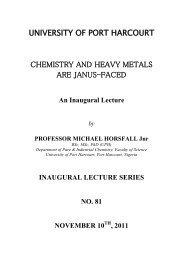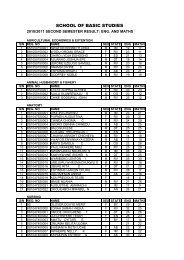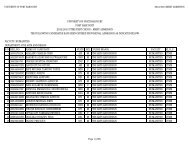55th Inaugural Lecture - 2007 by Prof. O. Akaranta - University of ...
55th Inaugural Lecture - 2007 by Prof. O. Akaranta - University of ...
55th Inaugural Lecture - 2007 by Prof. O. Akaranta - University of ...
You also want an ePaper? Increase the reach of your titles
YUMPU automatically turns print PDFs into web optimized ePapers that Google loves.
Table 1 shows a broad range <strong>of</strong> agricultural residues (wastes)usually produced from harvesting and processing <strong>of</strong>agricultural commodities. All crops produce collectableresidues, however the collection process may increase the cost<strong>of</strong> utilization. Sugarcane, fruits, grains and nuts are crops thatgenerate significant amount <strong>of</strong> residues at the processing sites.Bloods and bones from abattoirs and livestock wastes areanimal residues <strong>of</strong> importance.INDUSTRIAL RAW MATERIALS AND PRODUCTSFROM AGRO-WASTESA raw material is that primary input which when subjected tosome chemical and/or physical processes becomes convertedto a valuable product that can be exchanged for money (Fasina,1985). To a palm oil mill, palm fruit is the raw material, whilepalm oil, palm kernel and palm fruit fibres are end products.The palm kernel is the raw material for the production <strong>of</strong> palmkernel oil, which is subsequently used for the production <strong>of</strong>vegetable oils and soaps. In the same vein, palm fruit fibres areused for the production <strong>of</strong> furfural (Saad et al, 1978). Furfuralis a raw material for the production <strong>of</strong> phenol – furfural resins5




